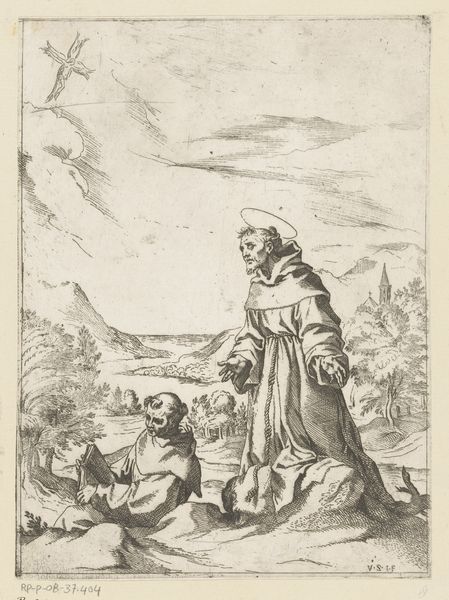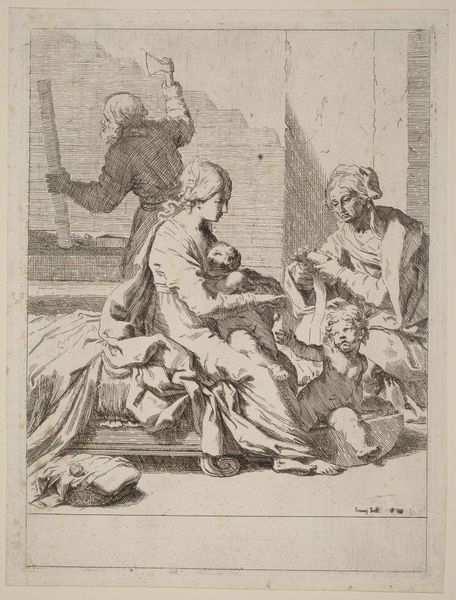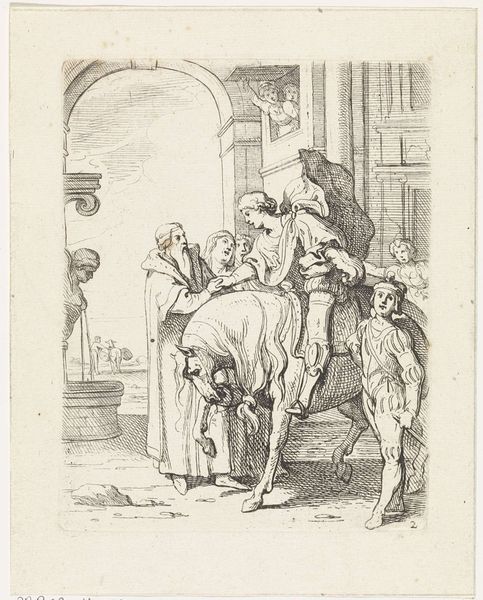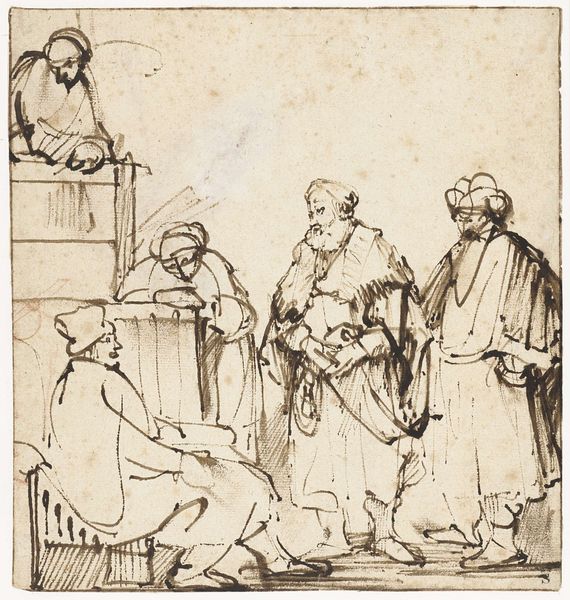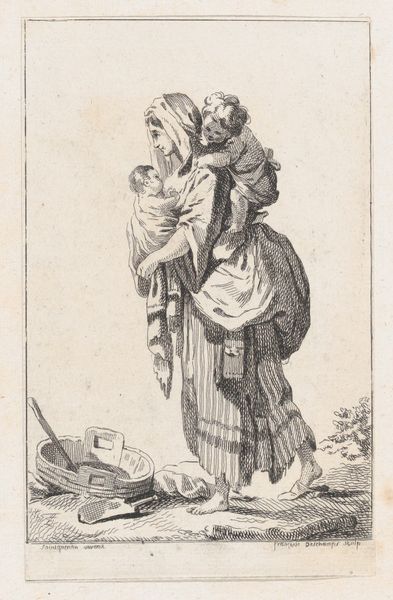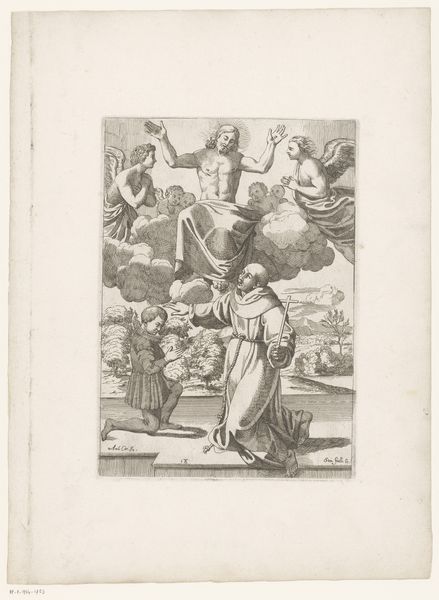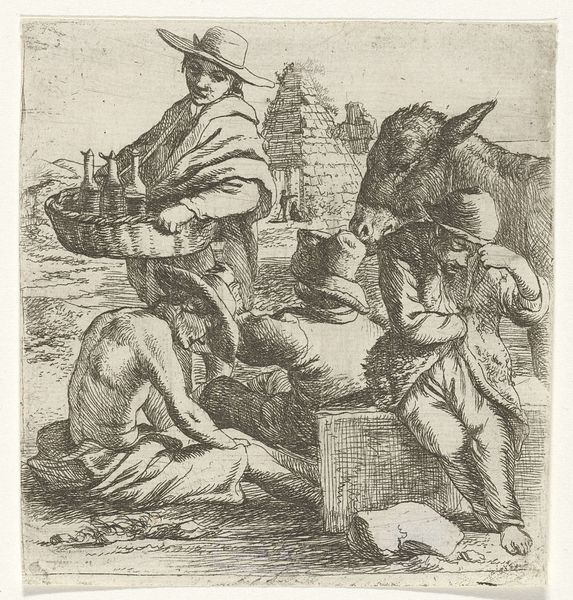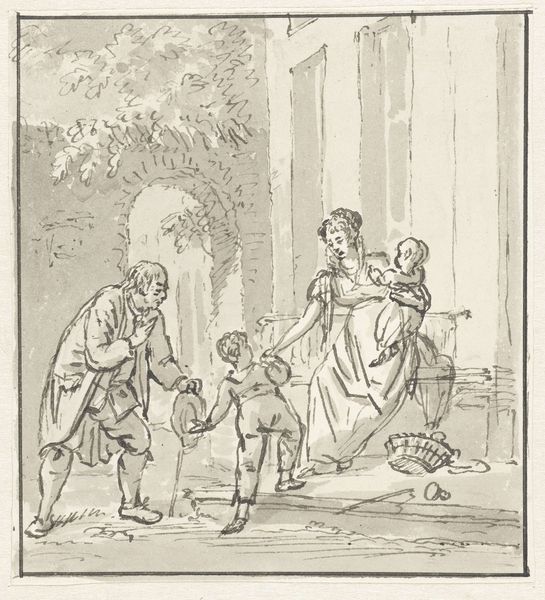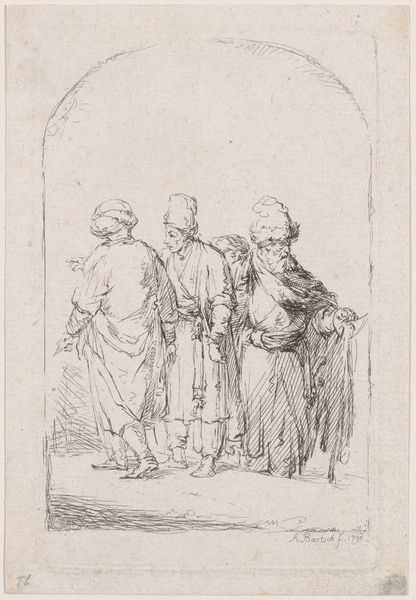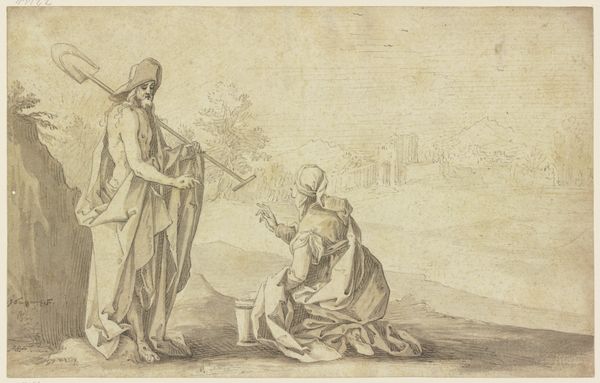
drawing, print, etching, ink
#
drawing
#
baroque
# print
#
etching
#
figuration
#
ink
#
genre-painting
#
realism
Dimensions: plate: 14.6 × 11 cm (5 3/4 × 4 5/16 in.) sheet: 20.9 × 15.5 cm (8 1/4 × 6 1/8 in.)
Copyright: National Gallery of Art: CC0 1.0
Curator: This etching by Giuseppe Maria Crespi, made around 1686-1688, is titled "Blind Man and a Woman." It depicts exactly that: a blind man led by a dog, with a seated woman on the side. What are your immediate thoughts? Editor: My first impression is of… poverty, almost starkness. The lines are quite rough, direct. It doesn't seem to romanticize anything. And I can't help thinking about what labor might have gone into producing multiple copies of it. Curator: That raw feel is quite deliberate, I think. Crespi often explored genre scenes like this, capturing the everyday lives of ordinary people with a great deal of sympathy. There's a certain dignity even in their hardship, don’t you think? He refrains from beautifying them, opting for simple directness. Editor: Yes, the simplicity is striking. We often overlook the sheer materiality of prints like this, focusing solely on the image. The ink, the paper, the etched lines created with such meticulous, physical effort to allow mass distribution, shaping broader public views of poverty… The physical creation influences perception, it makes these people into a product. Curator: Absolutely. And that leads me to think about accessibility. Etchings made art available beyond the wealthy elite. So here, this image – born from careful manual labor involving metal and ink – could expose different social strata to stories and images of blindness, poverty, marginalization... Editor: I find the fact that it can be mass produced to be relevant to its very message: Is it documenting the human condition or reifying it for commercial purposes? How do the printmakers’ workshops reflect the economics it sets out to depict? Curator: Those are interesting questions... It’s amazing how this single sheet, so spare in its lines, holds so many layers of meaning and possibility. It brings awareness of things like accessibility to art in this time, it also reminds one that poverty is real. Editor: A little picture loaded with societal implications, etched and pressed—labor upon labor shaping perspectives.
Comments
No comments
Be the first to comment and join the conversation on the ultimate creative platform.
